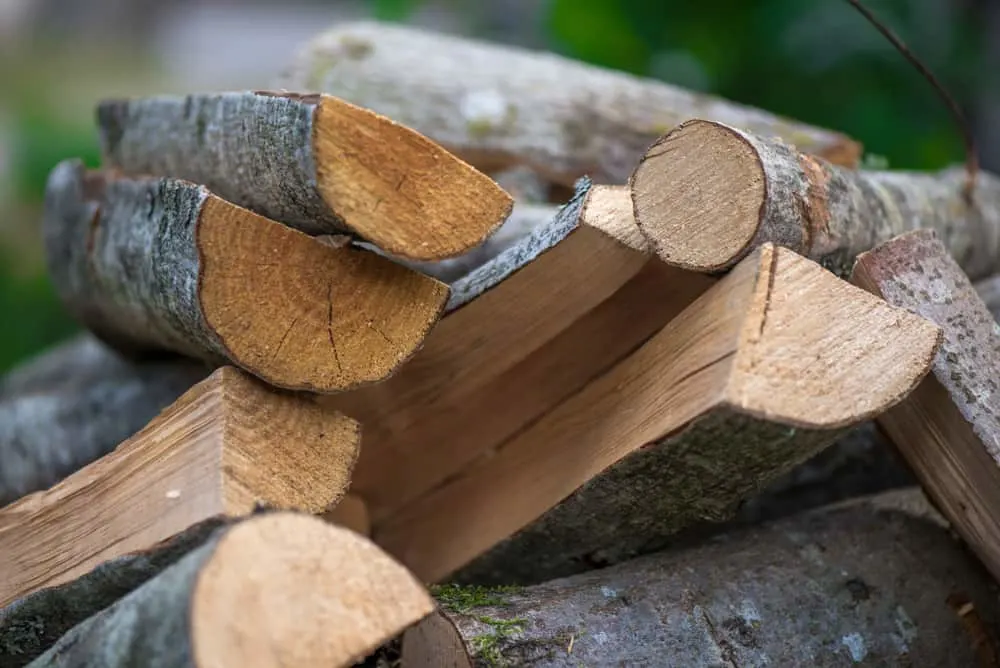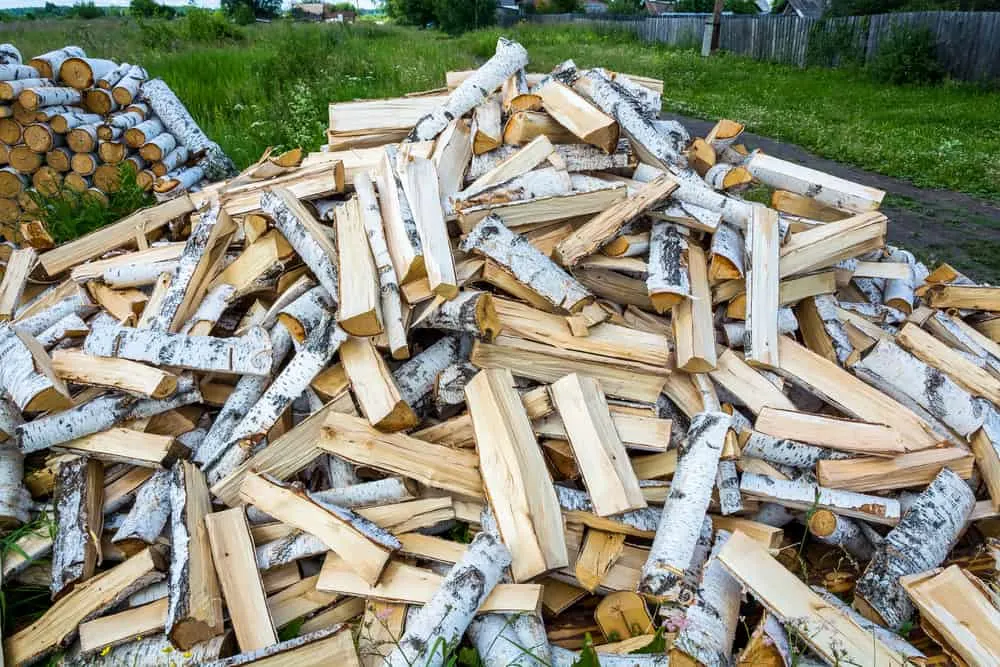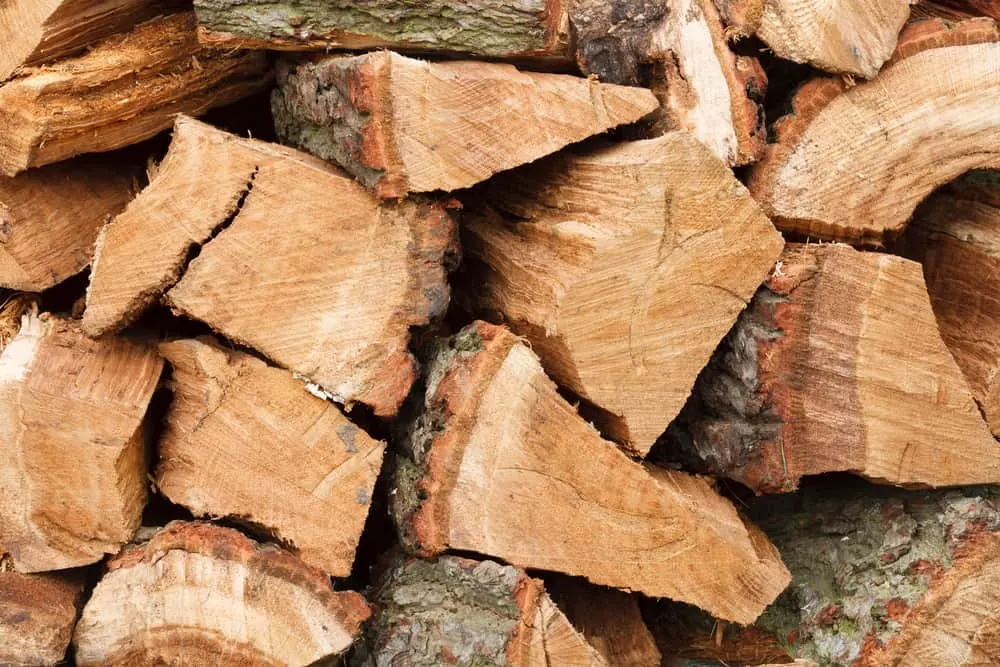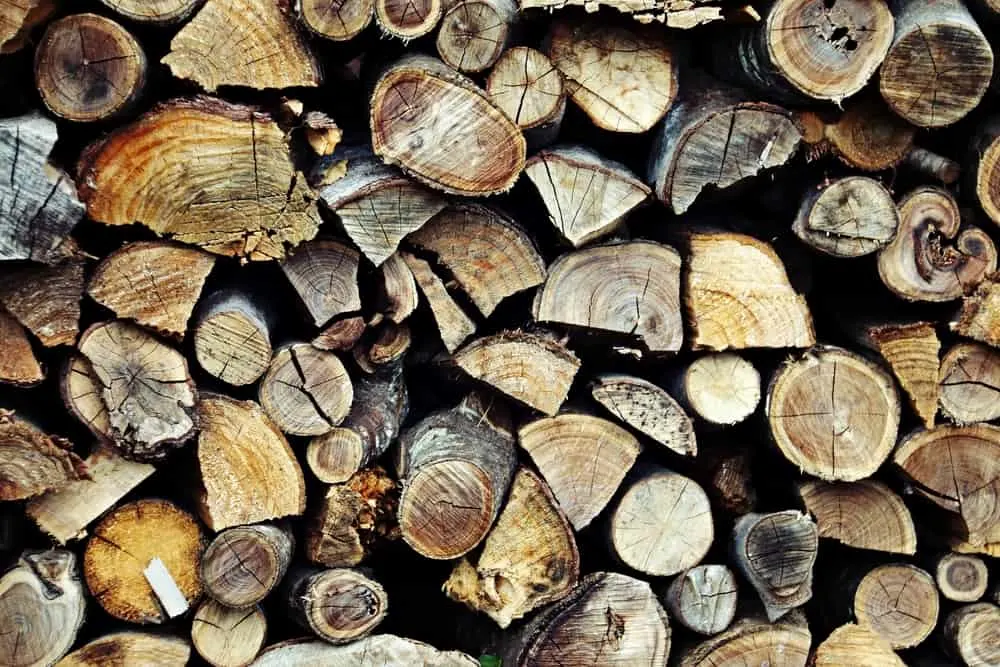
Whether you heat your home with wood or just enjoy sitting around a fire pit with friends and family, there’s nothing as comforting as the warmth and dancing light of a fire.
But did you know the wood you burn can have a significant impact on how hot your fire is and how long the wood burns?
Make sure you’re burning the right kinds of wood to meet your heating needs.
Firewood is either hardwood or softwood.
But what the heck does that mean?
According to this article over at How Stuff Works, it has to do with how the trees reproduce and not to do with the density (or hardness) of the wood.
Hardwoods are your deciduous trees, the ones that drop their leaves every fall, and softwoods are your conifers, your evergreens.
Hardwood trees have seeds that are inside a nut or fruit, think walnut, and apple trees. Softwoods drop their seeds (often via pinecones) and let the wind take care of the rest.
I’m sure you’re already thinking of examples of hardwoods like oak, maple, birch, beech, and locust.
And of course, common softwoods are firs, spruce, pine, and hemlock.
So which wood burns best?
For an outdoor fire pit, softwoods are a great choice. They are quick to get a fire going and burn quickly. But really, anything goes outside.
Which wood burns best in a wood stove?

Well, it’s a little trickier to answer that question.
Hardwoods are generally denser than softwoods which means they burn longer; this makes them an ideal firewood choice. Although hardwoods take longer to season, they often produce a hotter fire than softwood.
Related Reading: How To Properly Season & Store Firewood
And softwoods generally are a bit smokier than hardwoods. Although there are a few species of hardwoods like aspen, elm, and poplar that are on the smoky side too.
In general though, hardwood is the perfect wood to heat your home with.
Some insist that oak is the best firewood, despite the long wait for it to cure. (Sometimes as long as two years.) Oak burns for a long time and it’s one of the hottest burning woods.

But depending on what the winters are like where you live, you may not wish to have an intensely hot fire. In a milder climate, oak might be too hot.
I grew up in upstate New York and I remember plenty of times when dad and I would be sitting at the table playing cards in January, watching the snow falling. Meanwhile, every window and door of the cabin was open because he had loaded the stove up with oak. Oops!
Using this great chart from the World Forest Industries webpage, you can see different firewood BTU ratings.
With this information, you can begin to get an idea of the kind of heating energy in each type of wood. Now, you can also see what kind of heating potential is growing around where you live.
Having a mix of different types of wood stacked in your woodpile is the best approach to a long winter.

This is one of the advantages of cutting downed trees on your property; you get a good mix of trees.
Of course, when purchasing firewood, you can buy several different types of wood as well, it just takes a little more work
The great creosote debate.
Creosote is a byproduct of burning wood; it’s the leftovers.
Whatever doesn’t get burned gets carried up in the smoke as tiny particles. When you are outdoors this isn’t a problem; you can burn whatever you like without worrying about it. However, with a wood stove in your house, the creosote creates a sticky, sooty layer in your chimney.
If you aren’t careful, creosote can build-up over time and lead to a house fire.
It only takes a look at a few articles on the internet to start seeing the same dogma over and over. Don’t burn softwoods in a woodstove, never burn pine as it makes more creosote, etc. Softwoods get a bad rep.
The fact is all wood creates creosote.
And softwoods deserve a place in your woodpile. They are perfect kindling for starting fires or if you want that visual appeal of big, dancing flames.
Be diligent about cleaning your chimney. Pay attention to the signs of creosote buildup. You will see sooty stains on furniture near your wood stove. If your stove has a glass window there will be a black film on it.
Creosote has a very distinct smell too, much like asphalt because it contains tar. Creosote build-up leads to blueish smoke too.
Heed the warning signs and get your chimney cleaned!
In the end, burn what you like or what’s easy to get your hands on. A good firewood pile usually has a decent mix of both hardwoods and softwoods. And burning different types of wood at the same time will give you a good fire.
No matter what you burn, you need well-seasoned wood to get the best fire. This is the real secret!
Burning properly cured wood is the key to a hot, clean-burning fire, and will lead to less creosote buildup.
Check out our article on how to season your firewood.
Now get cutting and stacking that wood!
If there’s one thing I know, the woodpile always seems to get smaller quicker than it gets bigger. And enjoy the comfort of a cozy fire all winter long.
Finally, don’t forget to put your fireplace ashes to good use! There are so many surprising ways to use them.
Read Next: 10 Smart Ways To Source Free Firewood

Get the famous Rural Sprout newsletter delivered to your inbox.
Including Sunday musings from our editor, Tracey, as well as “What’s Up Wednesday” our roundup of what’s in season and new article updates and alerts.

